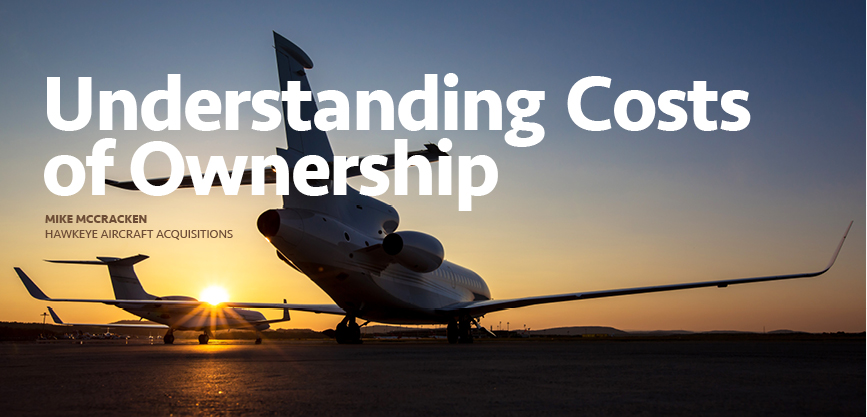Understanding Costs of Ownership
As published in BusinessAir Volume 27 #5
Chances are if you are perusing the pages of this magazine you are considering changing planes. Whether written down or not, you have a comfort zone for the capital that you have to spend.
Understanding the operating costs to own the aircraft is very important. There are different kinds of aircraft operators. There are those where the capital and operating costs are of little concern, and then there are those who have the capital but the cash flow for operating costs is not as flexible and another group who lacks the capital at this time, however has the cash flow to support higher operating costs.
If you are the more typical buyer, that the operating costs are important, it is important to understand the operating costs within the parameters of how you plan to use the aircraft. Many people fail to notice the foot notes in operating cost projections. Just like in an annual report, the footnotes can be more important than the actual numbers. I know of one OEM that based all of their operating costs for one model on 800 hours per year. Not even typical for that model of aircraft. Fuel prices and accurate fuel burns are important as some projections quote long range cruise fuel burns versus normal fuel burns. Are you really going to fly at long range cruise?
David Wyndam from Conklin and De Decker (in my opinion, the Gold Standard for operating cost information) recently wrote about an operator telling him that his costs for maintenance were about twice what their figures indicated. On further examination, the airplane in question had calendar inspections that were happening well before the hourly limit. In other words, if you did not fly as many hours as the projections were based on, those calendar inspections were going to result in a higher per hour cost.
Another example will help clarify this. There are some programs that only include routine maintenance and not the major inspections. So, for example, when looking at a Hawker that has a 24 and 48 month inspection that have significant costs, they are not included in the normal routine hourly costs. The same is true with components like landing gear overhaul, windshields, and other life cycle limited components. On a Hawker, if you only fly around 250 hours a year, you might have your maintenance cost per hour double to account for the lower utilization calendar inspections.
These calendar costs exist on all aircraft. The larger and the older, the aircraft, the more expensive these inspections can become. Failing to fully understand this can make a big difference in your budget. Add to that your utilization might be less than average, and the costs per hour can shoot up. When making a budget, read the foot notes of their assumptions, make sure you are including the major inspections, understand how many hours per year you are going to fly so you can accurately project what your hourly cost is going to be and ultimately your budget. You will minimize your surprises.





